HR Final Exam Chapter 6-9 review PDF

| Title | HR Final Exam Chapter 6-9 review |
|---|---|
| Author | Ricky Rozay |
| Course | Introduction to Human Resources |
| Institution | Mount Royal University |
| Pages | 3 |
| File Size | 73.7 KB |
| File Type | |
| Total Downloads | 37 |
| Total Views | 129 |
Summary
Download HR Final Exam Chapter 6-9 review PDF
Description
Chapter 6: List the characteristics of an effective orientation process? - Compensation/benefits - Paperwork - Training designed to prepare employees to perform their job effectively, learn about their organization and establish work relationships. - Combine various training methods Describe the benefits of employee orientation? - Training designed to prepare employees to perform their job effectively, learn about their organization and establish work relationships. - Combine various training methods Discuss systems and approaches to training and development - Development for careers, assessment of individuals 360 feedback - Job enlargement - Job enrichment - Job rotation - Mentors - Coaching Identify principles of learning and they facilitate training - Trainees are satisfied with the program - Gained knowledge and skills - Behavior changed - could do new tasks - Assessing improvements in individual and organizational performance Identify how a career development program integrates individual and organizational needs - Current information about the organization could help employees create realistic career development goals. - Career development increases employee motivation productivity - Focus on skill development contributes to learning opportunities How can employees’ career development be enhanced? - Setting goals and creating plans to achieve them - Write everything down - Utilize company programs - Own your career path Chapter 7: Explain the purpose of a performance management system? - The process through which managers ensure that employees’ activities and outputs contribute to the organization’s goals; - Four key elements: - Establishing And Knowing: what activities and outputs are desired - Observing: whether these activities and outputs occur - Providing Feedback: to employees regarding expectations
-
Identifying: performance issues and establishing ways to resolve these issues
Describe the management practices necessary for a good management system - 1) Fit - aligns with the organization’s overall business strategy - 2) Validity - the performance system measures what is supposed to measure - performance objectives and measures related to the duties in the individual's job - 3) Reliability - the performance management system and measures are consistently - applied across the organization - 4) Acceptability - the measures and system are practical and acceptable to the people - who are involved i.e., supervisors and employees - 5) Specific feedback - feedback for the employee is relevant to the job duties, honest - and straightforward and given in a timely manner Explain various methods used for performance review - 360 feedback system: employee’s performance is gathered from customers, employees, managers all used to compile a final assessment - Contrast: employees performance is compared to other - Self Evaluation - Rating’s scale - Management by Objectives Difference between coaching and mentoring - Coaching is based on mutual trust and respect but on short term - Mentoring is long term mutual trust and respect - Mentoring is more focused on creating an informal association between the mentor and mentee, whereas Coaching follows a more structured and formal approach. Chapter 8: Explain an organization’s strategic concerns in developing a strategic rewards program - Concerns could be that competitors from other companies can copy the same program and the sustainability of the advantages are at a risk - They are expensive and have a long term perspective. Take times until investments show profitability Identify various factors that influence the setting of pay levels - Pay rate - hourly wage for each hour worked - Piecework rate - a rate of pay for each unit produced - Salary - the amount of money paid for a month or year - Pay grades - sets of jobs having similar worth or content grouped together to establish - rates of pay - Pay ranges - possible pay rates defined by a minimum-maximum inmate for a particular - job - Broadbanding - reducing the number of pay ranges in the organization - Competency-based pay - pay structures that recognize employees’ contributions in - terms of skills and achievements List the type of incentive plans - Individual: Piece work, Standard hour plan, Bonuses - Group: Team compensation, Scanlon Plan, Rucker Plan - Enterprise: Profit Sharing, Stock Options
Explain employee benefits that are required by law - Social security, Medical, federal and state unemployment insurance, workers compensation. All these are required by law to provide employees. Describe voluntary benefits - Are offered by employers but are paid completely or mostly through payroll deferral. - Short term disability, cancer, dental etc. Chapter 9: Describe statutory rights, contractual rights, due process and legal implications of those rights - Statutory rights are individual legal rights, given to him or her by the local and national ruling government. They’re designed to protect citizens. Example: Paid leave, maternity leave a maximum workweek of 48 hours. - Contractual rights are a set of rights guaranteed whenever people enter into a valid contract with one another. An example could be the right to buy or sell, rights to open up a company etc. Discuss the meaning of discipline and how to investigate a disciplinary problem Discipline is how managers directly state to there employees about establishing clear rules for employees they’re violating, alert them about their behaviors and explain to them why it’s unacceptable. - To investigate a disciplinary problem, you would not talk down to your employee, communicate without anger, explain why the behavior is unacceptable, using corrective measures. Outline the differences between progressive and positive discipline (including Grounds and types of termination) - Progressive discipline is defined as a process or method that attempts to address and correct an employee's work performance or inappropriate workplace behavior by providing clear and constructive feedback through a series of increasingly formal steps. It’s done to employee - Positive discipline is a method in which the positive aspects of the employee's actions (rather than the negative behaviors) are highlighted. It seeks to explain to the employee what positive actions the employer is looking for, opting to focus on the wanted behaviors and outcomes instead of the problems. It’s done with employee - Types of termination could be discharge, misconduct, with cause (Harassment, racial slurs, breaking company policy)...
Similar Free PDFs

HR Final Exam Chapter 6-9 review
- 3 Pages

HR Final Exam Preparation
- 20 Pages

Final Exam Review Chapter 15
- 2 Pages

Chem Final Exam Review
- 12 Pages

Final Exam - Review notes
- 92 Pages

Bio Final Exam Review
- 2 Pages

Final EXAM Review booklet
- 5 Pages
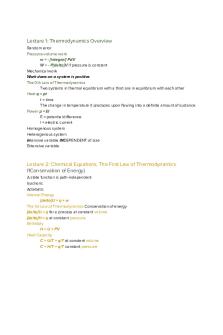
CHEM303 final exam review
- 4 Pages

Psychology Final Exam - Review
- 13 Pages
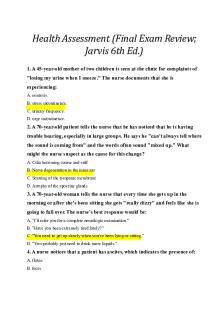
Jarvis Final Exam Review
- 12 Pages
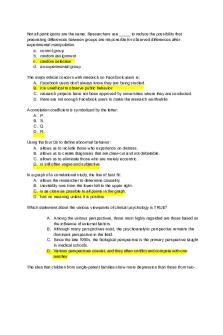
Final exam review
- 96 Pages
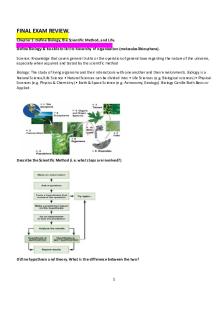
Final Exam Review
- 48 Pages
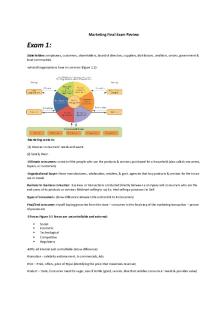
Marketing Final Exam Review
- 15 Pages
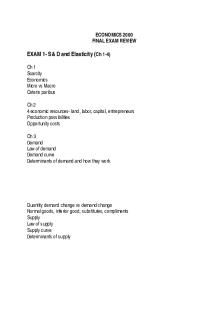
Final exam review
- 8 Pages
Popular Institutions
- Tinajero National High School - Annex
- Politeknik Caltex Riau
- Yokohama City University
- SGT University
- University of Al-Qadisiyah
- Divine Word College of Vigan
- Techniek College Rotterdam
- Universidade de Santiago
- Universiti Teknologi MARA Cawangan Johor Kampus Pasir Gudang
- Poltekkes Kemenkes Yogyakarta
- Baguio City National High School
- Colegio san marcos
- preparatoria uno
- Centro de Bachillerato Tecnológico Industrial y de Servicios No. 107
- Dalian Maritime University
- Quang Trung Secondary School
- Colegio Tecnológico en Informática
- Corporación Regional de Educación Superior
- Grupo CEDVA
- Dar Al Uloom University
- Centro de Estudios Preuniversitarios de la Universidad Nacional de Ingeniería
- 上智大学
- Aakash International School, Nuna Majara
- San Felipe Neri Catholic School
- Kang Chiao International School - New Taipei City
- Misamis Occidental National High School
- Institución Educativa Escuela Normal Juan Ladrilleros
- Kolehiyo ng Pantukan
- Batanes State College
- Instituto Continental
- Sekolah Menengah Kejuruan Kesehatan Kaltara (Tarakan)
- Colegio de La Inmaculada Concepcion - Cebu

